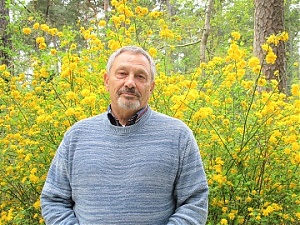EU – Baltic States, Modern EU
International Internet Magazine. Baltic States news & analytics
Monday, 05.01.2026, 10:57
New EU’s perspectives: effects for Baltic States
 Print version
Print versionReady for additional regulation
 |
|---|
Even
before and during the European Parliament election’s campaign, the perspective
vision for the European states’ development has been generally visualized. It
was about efficient and renewable energy, sustainability, circular and
bio-economy, to name a few.
Actually,
the Commission has been working on these issues during the last 5-years period:
during the Commission’s previous term, it has drafted several hundred
legislative acts of which 356 have
been approved as either directives and/or regulations.
Among
the most vital for the next 5 years are the following two priorities:
1.The
issues connected to the global climate order: including CO2 reduction,
fossil-neutral economies and sustainability. Some EU states, e.g. in
Scandinavian region have been very ambitious in taking these issues into the
domestic priorities: for example, Denmark announced that it will be
“carbon-neutral by 2050”, which means no coal, gas or oil in national energy
sector! What an example for other states!
In
fact, there already about eight EU states that adopted such carbon-neutral-2050
strategies, which is about one-third of the whole EU, good news!
Others,
fortunately only just 3-4 states, didn’t show great potentials in “green
growth” and have been so far less interested in turning their economies on the
sustainable paths. Although these countries “formally” adopted national
sustainable strategies, that didn’t have real and practical consequences for
changes in economic models.
The
main stumbling block for these states was the “transition” compensations for
turning their traditional economies into circular and sustainable, as well as
CO2 neutral, way.
Therefore,
in this first EU priority the perspective for the EU institutions would be to
show the ways the transfer to sustainability and green growth to be
“productive” and in line with the increasing GDP and welfare, while the member
states would show willingness to implement new models for growth.
In a
sense, the “Green Deal for Europe” shall be a new strategy for the whole EU
with the member states to follow…
2. The
second priority is as complicated as the first one: it’s about finding a
permanent and feasible strategy approach to increasing migration flows. Here
again the division among the states is great: some –about two-thirds of the EU
states - are willing to accept refugees (finding proper ways to integrate them
into the national growth patterns), others –about one-third, are taking more
restricted approaches.
New
Commission President, von der Leyen thinks that a compromise shall and will be
found: of course, people’s smuggling shall be stopped and the number of
“irregular refugees” shall be reduced. Hence, a new asylum and migration “pact”
shall be adopted by the end of 2019 with a possible reform of Schengen
agreement.
A
practical effect for the Baltic States in this regard is the EU’s idea of
strengthening the EU’s external border’s control: additional EU efforts will be
taken to increase border control with additional financial and logistic
assistance from the EU.
The “Baltic Course” editorial board will
keep our readers informed about further changes in the Union’s policies and
strategies with effect for the Baltic States.








 «The Baltic Course» Is Sold and Stays in Business!
«The Baltic Course» Is Sold and Stays in Business!

